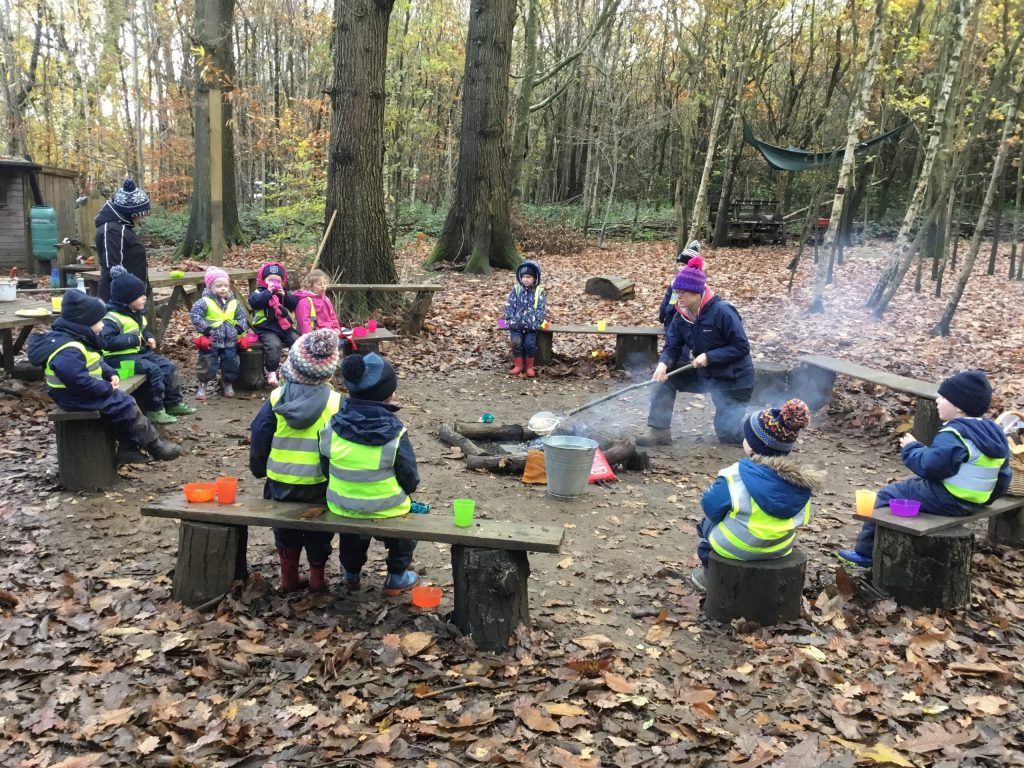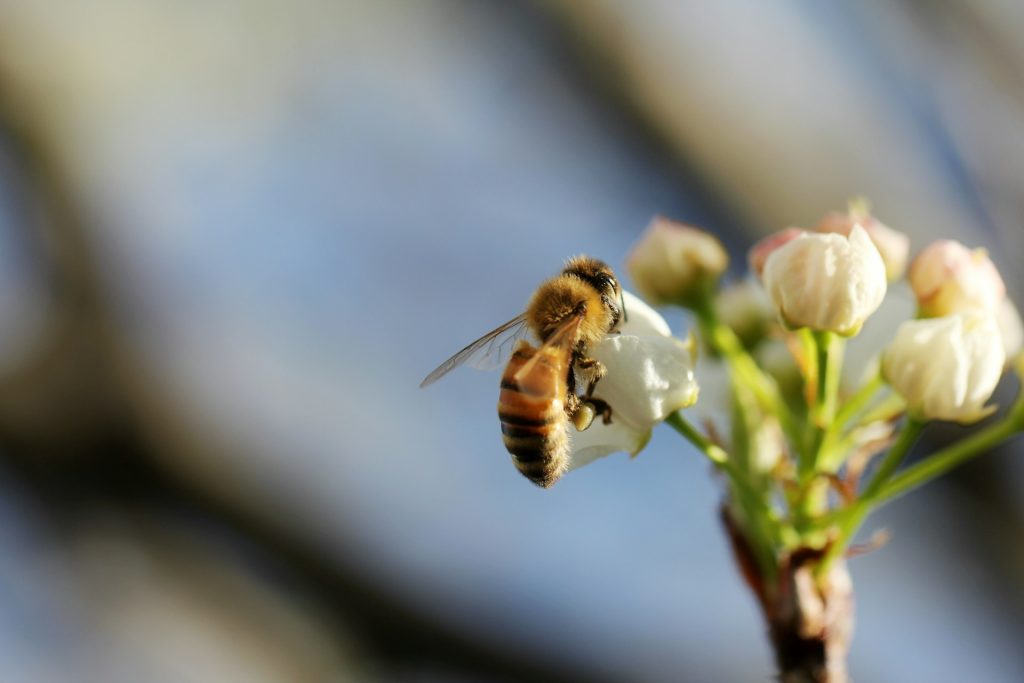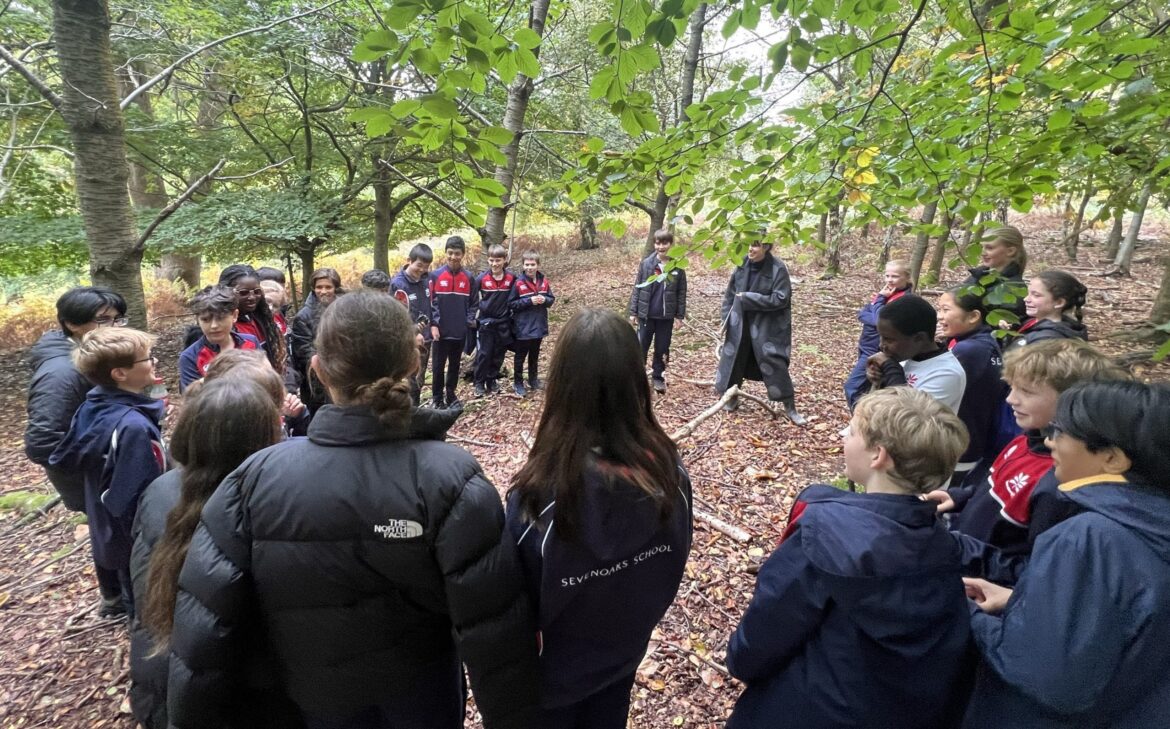DESIGNING AN OUTDOOR SYLLABUS FOR YEAR 7 BIOLOGY
Karen Mylod and the Biology Department at Sevenoaks School are planning for their Year 7 (Grade 6) Biology curriculum to be taught entirely outside.
The case for being outside
In recent years I have become increasingly aware of the benefits of spending more time outdoors in natural settings. After attending a session on outdoor learning at the Sevenoaks School Flourishing Conference in October 2023, as well as listening to podcasts from science communicators like Michael Mosley and Tim Spector and reading related literature (for references, see below), I have been convinced of the benefits of being outside. So why not more outdoor learning?
Outdoor learning
Given the persuasive body of evidence, as a department, we could no longer ignore the need to integrate outdoor learning into our curriculum. Arguably, more than for any other subject, biology lends itself to outdoor learning and we felt it important to lead the way and do something revolutionary: teaching every Year 7 biology lesson outdoors for an entire year. This decision was bolstered by the understanding that many Year 7 students are familiar with forest school classes from primary school, so should be comfortable having lessons outdoors. However, what we are planning is different to forest school, in that we will teach scientific skills, knowledge and concepts in an outdoor setting. Three outdoor biology lessons in our two-week timetable would provide the students with approximately 75 minutes of outdoor learning per week, a substantial portion of the recommended 120 minutes of outdoor activity for health and well-being (White et al., 2019).

Learning in the wild
To illustrate the potential of outdoor learning, I recall a transformative experience during a recent expedition to Croatia. I joined our Year 12 students working alongside a diverse group of scientists, including experts on bats and bat parasites, an engineering student designing fake flowers to test pollinator preferences, and a recent master’s graduate about to begin her PhD on sociality in insect colonies. By watching and assisting them with their data collection, our students gained insight into the scientific method. The questions and conversations that arose developed their understanding of reliability, repeatability, uncertainty, and experimental bias. They did all this without once picking up a pen or typing on a computer, yet they absorbed knowledge and skills and flourished both academically and personally.
Outdoor classroom and equipment
Our current Year 7 syllabus is heavily focused on cells and human biology, often neglecting the broader scope of our subject. This new outdoor syllabus aims to reconnect students with the essence of biology – the study of life in all its diversity. We are just a small part of the vast web of life on Earth, and this curriculum will reflect that. Key to achieving our aim will be the construction of an open-sided outdoor classroom within a relatively wild area of the campus. Additionally, we aim to have a bank of weatherproof equipment and clothing that will allow us to venture out and learn in all conditions. Some learning will take place in the surrounding meadow and woodland, but even when students are based primarily in the outdoor classroom, the fresh air, proximity to trees, and the natural soundtrack of birdsong will fundamentally benefit the students.
Furthermore, the classroom and outdoor equipment will be available for other departments to book when Year 7 Biology lessons are not taking place. By demonstrating what’s possible, we hope to lead the way in using the outdoor space and drawing inspiration from nature to plan and deliver innovative lessons on topics that might otherwise not be considered appropriate for the outdoors.
Planning device-free lessons
The detailed 45-lesson plan for the syllabus that we hope to launch in September 2026 is still in development, but we are looking forward to testing out some of our ideas this academic year. We intend each lesson to be primarily paper and device-free, except for essential tools like data loggers or camera traps for monitoring purposes. Interactive IT-based homework activities will follow each lesson, allowing students to consolidate, apply, or extend their learning.
The new syllabus will include more ecology and natural history, but we also intend to teach many other topics, scientific skills and concepts using natural resources in a creative way. A focus away from screens, interactive whiteboards, notebooks and pens, will allow more collaborative learning, developing oral communication, and memory skills and conceptual connections though the consolidatory homework tasks.
Laying foundations for future scientific learning

This new syllabus aims to create a holistic and immersive learning experience, deeply connecting students with the natural world. Biology has such a wide scope that we can easily spend one academic year outdoors, saving the microscopes, enzyme investigations, and other lab-based work for later in their academic journey. As Jacques Yves Cousteau said:
We only protect what we love, we only love what we understand, and we only understand what we are taught.
This ethos underpins our approach: by teaching biology outdoors, we hope to foster skills, deepen understanding, nurture a love of nature, and build an appreciation for the interconnectedness of all living organisms.

Karen Mylod, is Head of Biology at Sevenoaks School
Read the full article and more in the latest edition of Innovate, an academic journal published by the Institute of Teaching and Learning at Sevenoaks School. The articles share reflections, research and classroom experiences designed to inform best teaching practice. Read online here: https://www.sevenoaksschool.org/academic/institute-of-teaching-and-learning/publications/
FEATURE IMAGE: Our thanks to Karen and Sevenoaks School.
Support Images: Our thanks to The Sevenoaks Prep School for their Forest School image and to Sandy Millar on Unsplash
Biodiversity research experience – The video is an example of student expeditions offered in Croatia
References
Buxton RT, Pearson AL, Allou C, Fristrup K, Wittemyer G. (2021) A synthesis of health benefits of natural sounds and their distribution in national parks. Proceedings of the National Academy of Sciences in the U S A. Available at: https://tinyurl.com/4h43tvum
Hood M and Baumann O. (2024) Could Nature Contribute to the Management of ADHD in Children? A Systematic Review. International Journal of Environ mental Research and Public Health. 21(6). Available at:https://tinyurl.com/whwmm6n3
Kuo FE and Taylor AF. (2024) A potential natural treatment for attention-deficit/hyperactivity disorder: evidence from a national study. American Journal of Public Health.94(9). Available at:https://tinyurl.com/4e2f2w8u
Li Q, Kobayashi M, Wakayama Y, Inagaki H, Katsumata M, Hirata Y, Hirata K, Shimizu T, Kawada T, Park BJ, Ohira T, Kagawa T, Miyazaki Y. (2009) Effect of phytoncide from trees on human natural killer cell function. International Journal of Immunopathology and Pharmacology, 22(4). Available at: https://journals.sagepub. com/doi/10.1177/039463200902200410gaki
Panthee B, Gyawali S, Panthee P, Techato K. (2022) Environmental and Human Microbiome for Health. Life, 12 (3) Available at:https://tinyurl.com/trzb47ez
White, M.P., Alcock, I., Grellier, J. et al. (2019) Spending at least 120 minutes a week in nature is associated with good health and wellbeing. Scientific Reports, 9. Available at:https://tinyurl.com/3wh2tax5
The post LEARNING OUTDOORS appeared first on Consilium Education.


